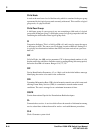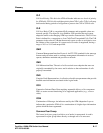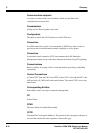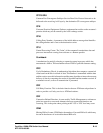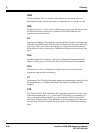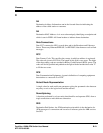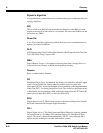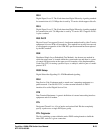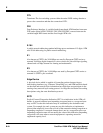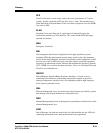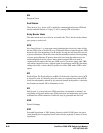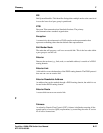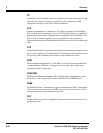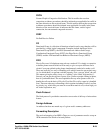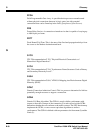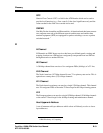
E Glossary
B-24 Centillion 1200N ATM Switch User Manual
NTP 297-8103-903
DTL
Terminator The last switching system within the entire PNNI routing domain to
process the connection and thus the connection's DTL.
DXI
Data Exchange Interface: A variable length frame-based ATM interface between a
DTE and a special ATM CSU/DSU. The ATM CSU/DSU converts between the
variable-length DXI frames and the fixed-length ATM cells.
E
E.164
A public network addressing standard utilizing up to a maximum of 15 digits. ATM
uses E.164 addressing for public network addressing.
E1
Also known as CEPT1, the 2.048 Mbps rate used by European CEPT carrier to
transmit 30 64 kbps digital channels for voice or data calls, plus a 64 kbps signaling
channel and a 64 kbps channel for framing and maintenance.
E3
Also known as CEPT3, the 34.368 Mbps rate used by European CEPT carrier to
transmit 16 CEPT1s plus overhead.
Edge Device
A physical device which is capable of forwarding packets between legacy
interworking interfaces (e.g., Ethernet, Token Ring, etc.) and ATM interfaces based
on data-link and network layer information but which does not participate in the
running of any network layer routing protocol. An Edge Device obtains forwarding
descriptions using the route distribution protocol.
EFCI
Explicit Forward Congestion Indication: EFCI is an indication in the ATM cell
header. A network element in an impending-congested state or a congested state
may set EFCI so that this indication may be examined by the destination end-
system. For example, the end- system may use this indication to implement a
protocol that adaptively lowers the cell rate of the connection during congestion or
impending congestion. A network element that is not in a congestion state or an
impending congestion state will not modify the value of this indication. Impending
congestion is the state when a network equipment is operating around its
engineered capacity level.



